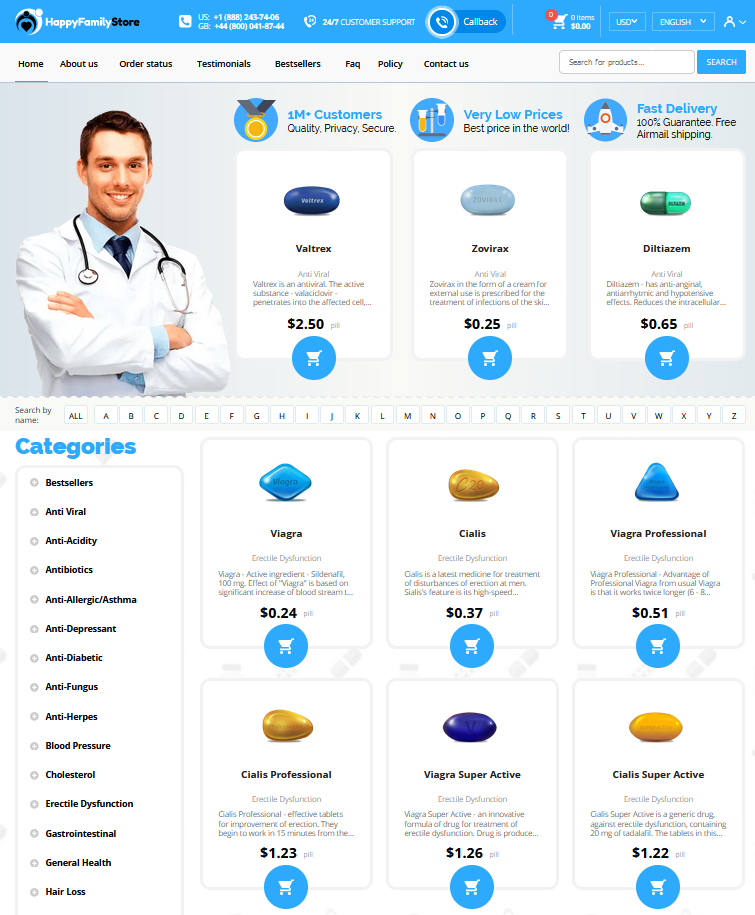To Buy Bactrim Online Visit Our Pharmacy ↓
 How Bactrim Fights Bacterial Infections: a Deep Dive
How Bactrim Fights Bacterial Infections: a Deep Dive
Understanding the Mechanism of Bactrim
Bactrim, a potent antibiotic duo, precisely targets bacterial folate synthesis, a process crucial for DNA replication and cell division. It combines two active components, sulfamethoxazole and trimethoprim, which work synergistically to disrupt essential metabolic pathways in bacteria. While sulfamethoxazole curtails dihydropteroate synthase, trimethoprim inhibits dihydrofolate reductase, effectively depleting folic acid reserves.
| Component | Target Enzyme | Role |
|---|---|---|
| Sulfamethoxazole | Dihydropteroate Synthase | Blocks folic acid production |
| Trimethoprim | Dihydrofolate Reductase | Prevents folic acid conversion |
By strategically inhibiting these enzymes, Bactrim efficiently thwarts bacterial proliferation, providing a robust defense against a range of infections.
The Role of Sulfonamides and Trimethoprim

Sulfonamides and trimethoprim form the dynamic duo that makes Bactrim effective against bacteria. These two components work synergistically to inhibit the production of folic acid, a crucial nutrient for bacterial growth. Sulfonamides act by imitating para-aminobenzoic acid (PABA), misleading bacteria that rely on this building block for folic acid synthesis. Meanwhile, trimethoprim further disrupts this pathway by targeting dihydrofolate reductase, an enzyme essential for converting folic acid into its active form.
By simultaneously blocking different steps in folic acid production, Bactrim effectively starves bacteria of this necessary DNA precursor. This cooperative mechanism allows Bactrim to tackle a broad range of bacterial infections, enhancing its efficacy and making it a versatile choice in medicine.
Bactrim's Spectrum of Bacterial Targets
Bactrim showcases its prowess through a broad range of bacterial adversaries, addressing both Gram-positive and Gram-negative bacteria. A dual-action antibiotic, it synergizes two active ingredients to effectively dismantle bacterial defenses. Clinicians often reach for Bactrim when facing urinary tract infections, bronchitis, or even specific types of pneumonia, thanks to its ability to halt the growth of notorious pathogens such as Escherichia coli and Streptococcus pneumoniae.
Beyond its core targets, Bactrim ventures into treating ear infections, traveler's diarrhea, and certain sexually transmitted infections, wielding its versatile scope where resistance is not an issue. This adaptability extends its utility across different clinical settings, empowering physicians to tackle multi-faceted bacterial infections with a single prescription. Nevertheless, its use must be judicious, considering the ever-present specter of antibiotic resistance.
Clinical Applications: from Urinary Tract to Respiratory Infections

Bactrim is a versatile antibiotic, often prescribed for its effectiveness against various infections. It shines in treating urinary tract infections (UTIs), swiftly addressing the bacterial culprits responsible. Its ability to penetrate the bladder and kidney tissues ensures comprehensive treatment, making it a preferred choice for many healthcare providers.
Beyond UTIs, Bactrim's prowess extends to respiratory infections. It tackles bronchitis and other pulmonary conditions by targeting the bacteria responsible for these ailments. Its dual action against bacterial synthesis processes makes it a formidable player in the antibiotic arena, offering relief with precision.
Navigating Potential Side Effects and Risks
Bactrim, a powerful antibiotic duo, is not without its potential side effects and risks. Patients should be aware of the possibilities, including skin rash and gastrointestinal discomfort, which can often arise with its usage. More serious effects, albeit rarer, involve blood-related complications like agranulocytosis or thrombocytopenia. Therefore, regular monitoring through blood tests may be recommended during prolonged use, allowing healthcare providers to adjust the treatment if necessary. Staying informed and communicating openly with your healthcare provider is crucial when navigating the intricacies of medication management.
An important aspect of using Bactrim safely is understanding drug interactions and contraindications.
| Factor | Consideration |
|---|---|
| Drug Interactions | Be cautious with anticoagulants and certain diuretics. |
| Allergic Reactions | Watch for signs of severe rash or breathing difficulties. |
Patients should notify healthcare providers of their full medical history, including any known allergies to sulfonamides or trimethoprim. This proactive dialogue can significantly mitigate risks and tailor a safer treatment plan.
Comparing Bactrim with Other Antibiotics
When comparing Bactrim to other antibiotics, its distinction lies in its dual-action formula combining sulfamethoxazole and trimethoprim. This combination disrupts bacterial folic acid synthesis, providing a synergistic effect that enhances its bacterial targeting capabilities. Unlike penicillin-based drugs, which target bacterial cell walls, Bactrim inhibits DNA synthesis, offering an alternative for patients with penicillin allergies or resistant infections. Its ability to thwart a broad range of bacteria, including those resistant to other treatments, makes it invaluable in many clinical situations.
However, Bactrim's effectiveness is balanced by its potential side effects and specific bacterial resistance. Antibiotics like amoxicillin may be favorable due to fewer side effects, but they lack Bactrim's broad spectrum. Careful consideration and sensitivity tests guide the choice to ensure both efficacy and patient safety. For more in-depth information, consult sources such as the National Center for Biotechnology Information and Drugs.com.
orderedad

